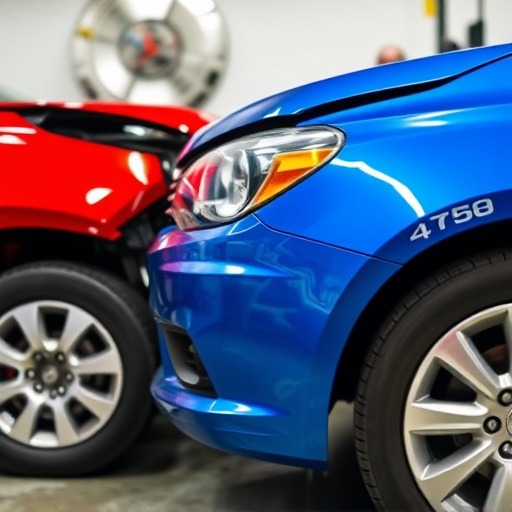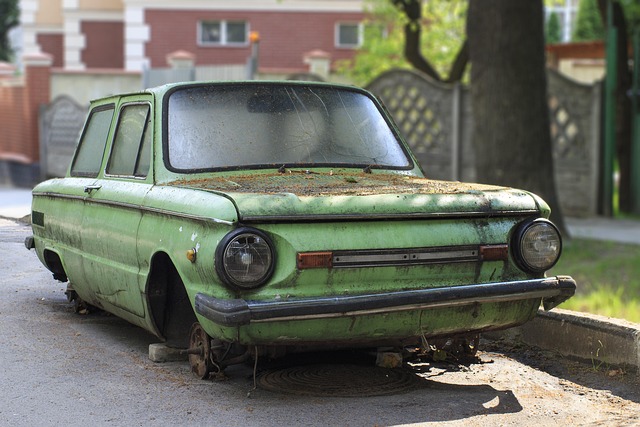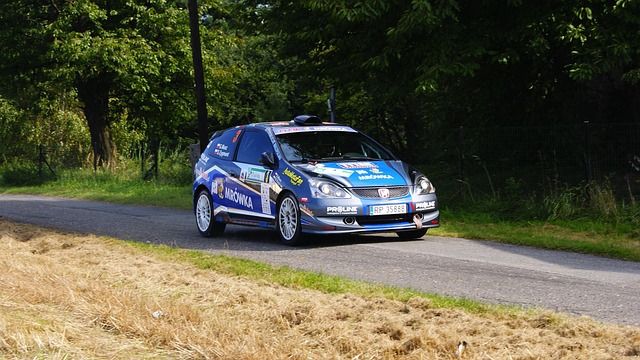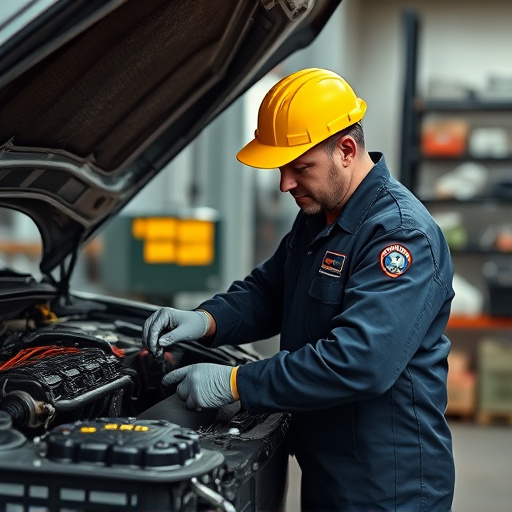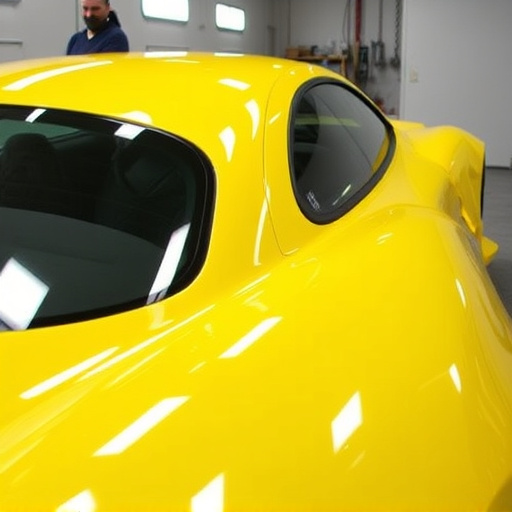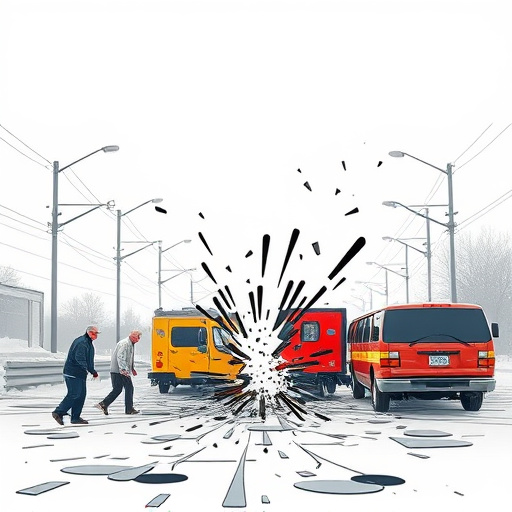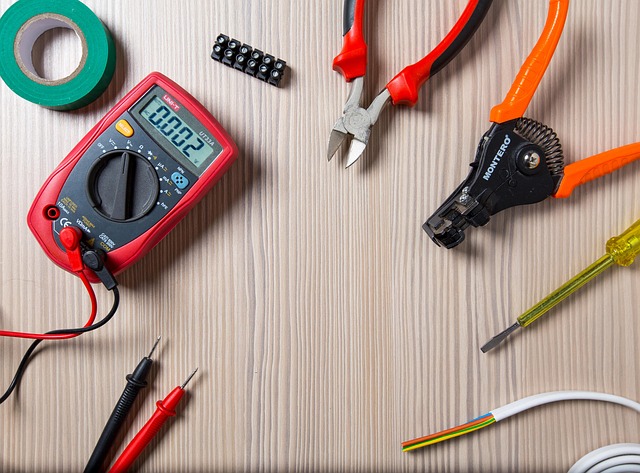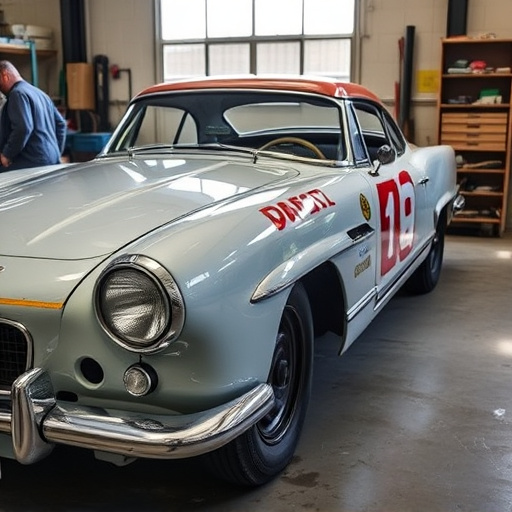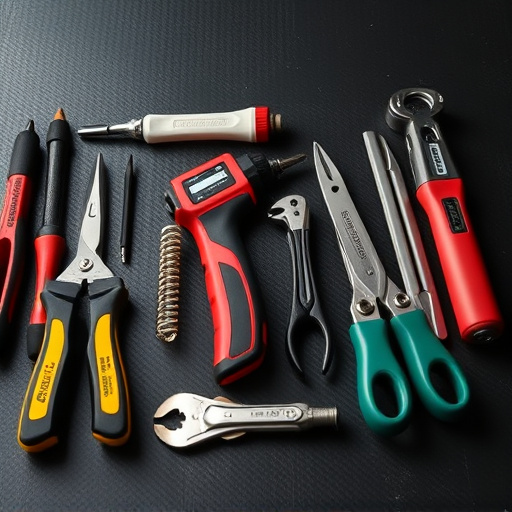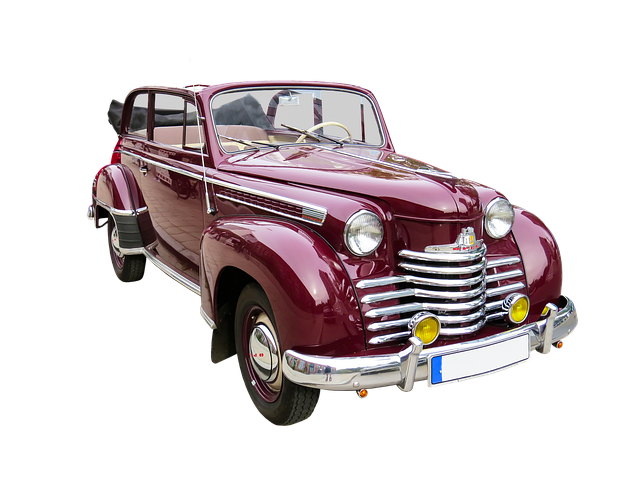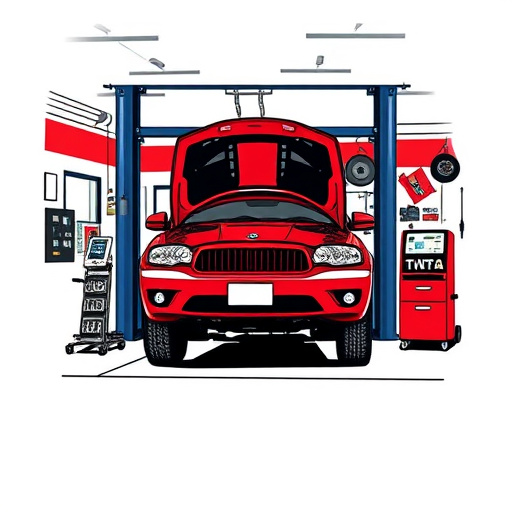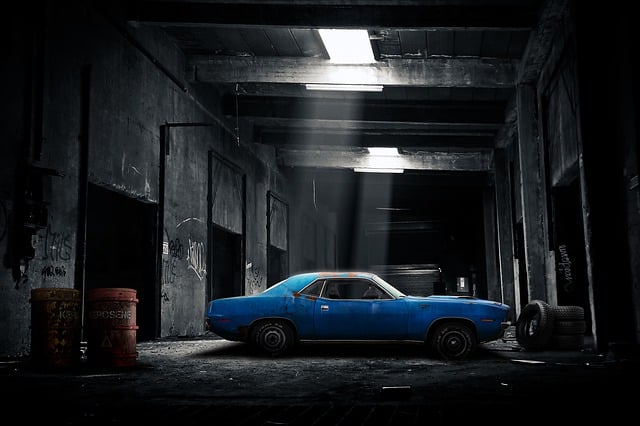Heat damage auto body repair involves restoring vehicles' paint jobs affected by high temperatures from accidents or fires. Technicians use advanced tools and color theory knowledge to accurately match paint, addressing blisters, cracks, and peeling. The meticulous process includes inspection, documentation, color analysis, and careful painting with thin coats for a seamless, long-lasting repair that blends with the original paint.
In the realm of heat damage auto body repair, technicians must master the art of paint matching to restore vehicles to their original splendor. Heat can significantly impact a car’s paint job, causing discoloration and shifting textures. This article delves into the intricate process technicians employ to navigate this challenge. We explore the science behind paint matching techniques, uncovering the steps they follow to accurately replicate original colors and ensure a seamless finish in heat damage auto body repair work.
- Understanding Heat Damage and Its Impact on Paint
- The Science Behind Paint Matching Techniques
- Step-by-Step Process for Technicians to Match Paint in Heat Damage Repair
Understanding Heat Damage and Its Impact on Paint

Heat damage in auto body repair refers to the deterioration or change in a vehicle’s paint due to exposure to high temperatures. This often occurs after a vehicle collision, fire, or other incidents that involve intense heat. The impact of heat damage on paint can be significant, leading to changes in color, texture, and overall appearance. When a vehicle undergoes a collision or is exposed to flames, the extreme heat can cause the paint to blister, crack, or even peel off, revealing the underlying metal surface.
Technicians in heat damage auto body repair must possess a deep understanding of these effects to accurately match paint during restoration. They carefully assess the extent of the heat damage, considering factors like temperature reached, duration of exposure, and the specific type of paint used on the vehicle. This meticulous process involves using specialized tools and techniques to blend and apply new paint that seamlessly integrates with the existing finish, ensuring a pristine appearance once the repair is complete, be it a bumper repair or more extensive vehicle paint repair.
The Science Behind Paint Matching Techniques

In heat damage auto body repair, technicians employ sophisticated paint matching techniques that combine both science and art. The process starts with a thorough understanding of color theory and light interaction. Each paint job is unique, composed of specific pigments and dyes that absorb, reflect, or transmit light in distinct ways. Technicians use advanced tools like color scanners and spectrophotometers to measure the exact color properties of the damaged area and surrounding unharmed sections. This data forms a digital benchmark against which they can match new paint precisely.
The science behind these techniques is rooted in matching not just the base color but also the gloss, texture, and even subtle variations caused by heat damage. By analyzing the data and using specialized software, technicians select or create a paint formula that duplicates the original look. This involves mixing pigments to achieve the right hue, adding clear coats for protection, and ensuring the finished product seamlessly blends with the existing vehicle paint repair. The result is not just a visually identical patch but a long-lasting, heat-resistant repair that preserves the vehicle’s overall aesthetic value through effective vehicle repair services.
Step-by-Step Process for Technicians to Match Paint in Heat Damage Repair

In heat damage auto body repair, technicians employ a meticulous process to match paint accurately. They begin by thoroughly inspecting the damaged area, documenting its extent and unique characteristics using high-resolution photographs. Next, they gather samples of the original paint using swabs or scrapings from unobstructed areas, ensuring these serve as accurate representations.
The technician then prepares a color analysis report using specialized software that compares the collected samples to available paint options. This digital matching process considers factors like hue, saturation, and luminance. Once the closest match is identified, they proceed with the application of the selected paint, blending it seamlessly into the existing surface through a series of thin coats and careful sanding. Continuous inspection ensures color consistency throughout the repair process, ultimately delivering a flawless finish that blends in perfectly with the vehicle’s original paint job, enhancing the overall quality of car repair services provided.
In the realm of heat damage auto body repair, technicians employ advanced paint matching techniques to restore vehicles to their pre-incident condition. By understanding the science behind color theory and utilizing precise tools, they navigate the intricate process of blending and mixing paints to create a flawless finish. This meticulous approach ensures that the repaired vehicle not only looks good but also retains its original appearance, effectively reversing the effects of heat damage without compromising quality or aesthetics.
